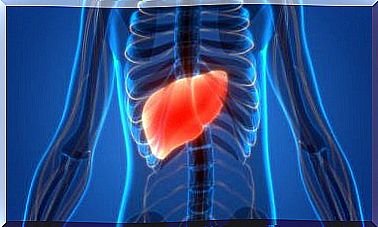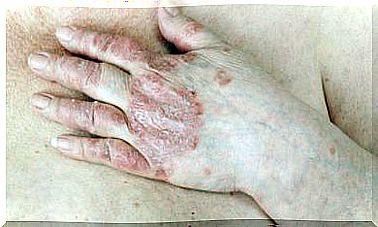Types Of Celiac Disease And Their Characteristics
Celiac disease is a diet-dependent condition that can severely damage the intestines. We explain more about it.

Regarding the pathology called celiac disease , it is important to know that it does not always present the same way. Therefore, the different types of celiac disease have been studied and classified.
It is an autoimmune pathology associated with gluten. Gluten is a protein found in many foods, especially those that contain wheat or barley. In Europe, it is estimated to affect around 1% of the population.
The problem is, it can be asymptomatic in a lot of cases. What makes the diagnosis more complex and later. We therefore explain in this article the main types of celiac disease as well as their characteristics.
What is celiac disease?
As just mentioned, celiac disease is an autoimmune condition characterized by a reaction to gluten. In other words, when this protein is ingested, an immune response takes place in the small intestine. This reaction ends up damaging the intestinal lining.
In addition, gluten is a protein that is present in various cereals. Especially wheat, rye or barley. In general, these foods are very present in the diet. These cereals are part of bread and pasta.
The progressive damage to the intestinal mucosa over time affects the absorption of nutrients during digestion. That is why in many cases there is weight loss, anemia or impaired growth in children.
While it is not yet clear exactly what causes the different types of celiac disease, the genetic factor is known to be the determining factor. Likewise, it is often associated with other types of autoimmune diseases. Celiac disease and type 1 diabetes mellitus could be linked, according to a study published in the Cuban Journal of Food and Nutrition.

Types of celiac disease
Within celiac disease, there are different clinical forms depending on the symptoms and the results of certain additional examinations that allow the digestive system to be explored. According to the Federation of Associations of Celiac People in Spain , almost 75% of patients are not diagnosed.
These data stem from the fact that, until not so long ago, we did not know that there could be asymptomatic cases. Therefore, the types of celiac disease are: asymptomatic, symptomatic, potential, latent, and refractory. Here are their main characteristics.
Asymptomatic celiac disease
Asymptomatic or subclinical celiac disease , as the name suggests, is one that has no symptoms. However, during additional examinations (such as an endoscopy to observe the intestine), the presence of the disease becomes apparent.
Classic or symptomatic celiac disease
In this case, the affected person has both symptoms and positive test results. Nevertheless, the signs are very varied. Some people experience diarrhea, weight loss, fatigue, vomiting, and abdominal pain.
While in other cases we see continuous constipation instead of diarrhea. Other typical symptoms are stunted growth in children, meteorism and abdominal distension. Indirectly, we see anemia and even constant irritability.
Potential celiac disease
This type of celiac disease refers to people who do not have symptoms but have been shown to have a high likelihood of developing this condition. This can be verified by genetic tests, such as determining the HLA-DQ2 / DQ8 gene.
However, in these patients, a biopsy of the small intestine tissue shows no signs of the disease. According to an article in the Medical Journal of Chile, these people should ideally be followed closely. Although they don’t need to follow a strict gluten-free diet.
Latent disease
In this case, the person has been diagnosed positively, but after some time, no symptoms or intestinal disorders are seen. For example, a patient diagnosed during childhood who, by carrying out a strict gluten-free diet, no longer suffers from the disease despite the reintroduction of this protein.
Refractory celiac disease
Refractory celiac disease refers to cases who, despite a gluten-free diet, still have symptoms or signs of the disease. In order to be able to confirm this data, it is necessary that the person remains for more than six months without any contact with the protein.

Conclusion…
The most important thing to remember is that there is not just one form of celiac disease. Also be aware that it can leave intestinal lesions in people who do not express symptoms. In most cases, therefore, it is not easy to get a diagnosis.
In addition, it is necessary to confirm the presence of this pathology in time because the intestinal damage can become irreversible and have serious consequences. In particular, they can cause malnutrition or stunted growth in children.
Thus, in case of suspicion of gastrointestinal symptoms during the ingestion of gluten, it is essential to consult a doctor. Additional tests are also accessible and can be performed relatively easily.









